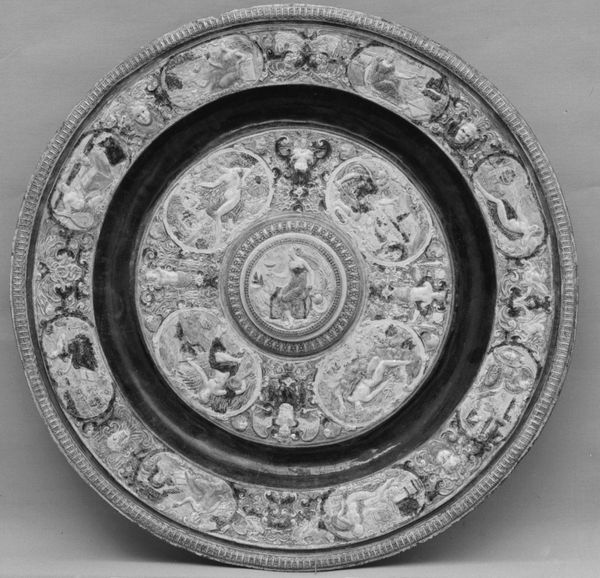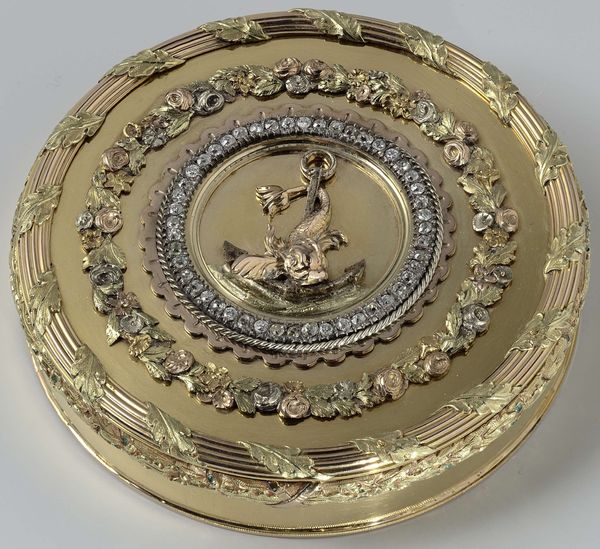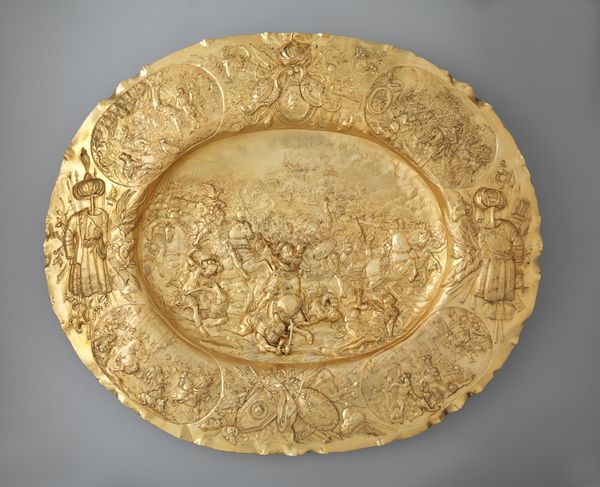
Facsimile of Platter (Nuremberg School, c. 1710-1720) c. 1900
0:00
0:00
Dimensions: sight: 55.9 x 45.7 cm (22 x 18 in.)
Copyright: CC0 1.0
Curator: Good morning. Before us, we have a facsimile of a platter crafted by the Nuremberg School, dating back to approximately 1710 to 1720. Editor: It’s breathtaking, this gilded surface shimmering with what looks like scenes from classical mythology and scripture. Curator: Precisely. The central emblem, and the surrounding medallions, are replete with iconography that speaks to a rich cultural heritage. The choice of these images – the crucifixion, battle scenes – links to the prevalent cultural narratives of the period. Editor: Nuremberg at this time was a center for skilled artisans, wasn't it? These platters, often made of brass, were important cultural status objects for display. Curator: Yes, indeed. These objects signified wealth and social status, and simultaneously showcased a learned understanding of historical and religious themes. Editor: It’s fascinating how even a utilitarian object like a platter could become a canvas for communicating complex cultural values. The imagery is all a public statement. Curator: Ultimately, this platter serves as a powerful reminder of how objects can embody a culture's deepest beliefs. Editor: Absolutely, I agree. It's left me appreciating the powerful symbolism embedded within even the most seemingly ordinary objects.
Comments
No comments
Be the first to comment and join the conversation on the ultimate creative platform.













